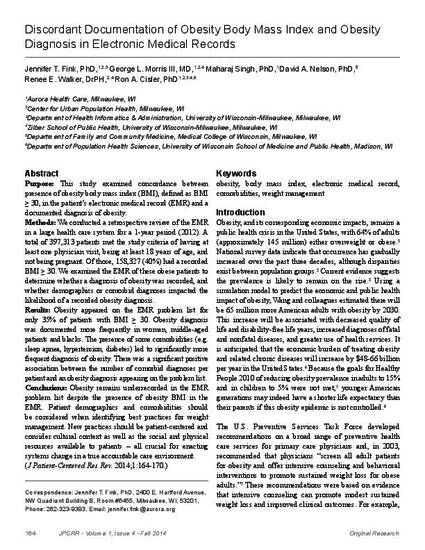
- obesity,
- body mass index,
- electronic medical record,
- comorbidities,
- weight management
Purpose: This study examined concordance between presence of obesity body mass index (BMI), defined as BMI ≥ 30, in the patient’s electronic medical record (EMR) and a documented diagnosis of obesity.
Methods: We conducted a retrospective review of the EMR in a large health care system for a 1-year period (2012). A total of 397,313 patients met the study criteria of having at least one physician visit, being at least 18 years of age, and not being pregnant. Of those, 158,327 (40%) had a recorded BMI ≥ 30. We examined the EMR of these obese patients to determine whether a diagnosis of obesity was recorded, and whether demographics or comorbid diagnoses impacted the likelihood of a recorded obesity diagnosis.
Results: Obesity appeared on the EMR problem list for only 35% of patients with BMI ≥ 30. Obesity diagnosis was documented more frequently in women, middle-aged patients and blacks. The presence of some comorbidities (e.g. sleep apnea, hypertension, diabetes) led to significantly more frequent diagnosis of obesity. There was a significant positive association between the number of comorbid diagnoses per patient and an obesity diagnosis appearing on the problem list.
Conclusions: Obesity remains underrecorded in the EMR problem list despite the presence of obesity BMI in the EMR. Patient demographics and comorbidities should be considered when identifying best practices for weight management. New practices should be patient-centered and consider cultural context as well as the social and physical resources available to patients –– all crucial for enacting systems change in a true accountable care environment.
